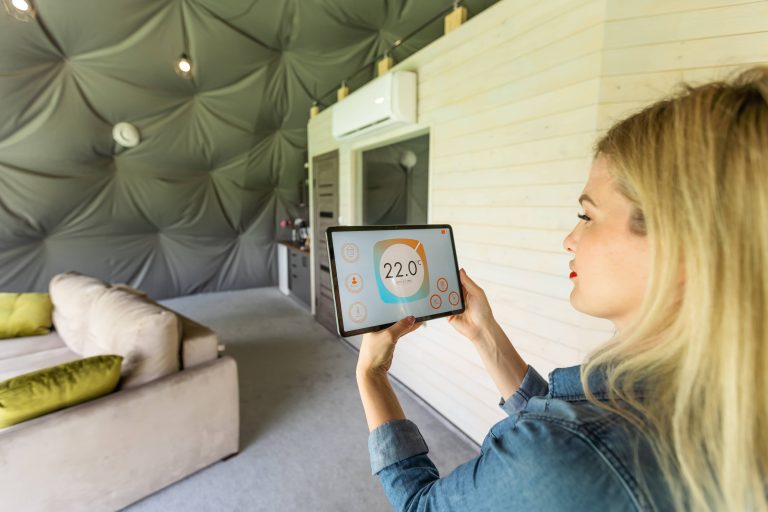
As the days grow shorter and the air chills, homeowners often face a well-known dilemma during the winter months: combating indoor air quality issues. Two household appliances dominate the conversation: humidifiers and dehumidifiers. Both these devices serve the purpose of balancing indoor humidity levels, yet they do so in distinct ways. Therefore, understanding the specifics of each can help you determine which appliance is best suited for your winter needs.
Understanding Humidity: The Basics
Humidity is the amount of moisture in the air. During the winter, indoor air tends to dry out due to the heating systems we use, often dropping humidity levels below the recommended range of 30-50%. This can lead to a slew of problems, from static electricity to dry skin and respiratory issues. Conversely, some homes may experience excess moisture, leading to condensation on windows and potential mold growth, which can also be concerning for health and structural reasons.
Humidifiers: Adding Moisture to the Air
A humidifier is designed to add moisture to the air, making dry conditions more bearable. There are various types of humidifiers, including ultrasonic, evaporative, and steam vaporizers, each functioning slightly differently but with the same end goal.
1. Benefits of Humidifiers:
– Health Improvement: Humidifiers can alleviate dry skin, chapped lips, and dry throat. They help reduce the symptoms of colds and allergies by maintaining moist nasal passages.
– Home Preservation: Dry air can cause wood floors and furniture to crack. Adding humidity can help preserve your home’s interior.
– Warmth Perception: Moister air can feel warmer, thus potentially reducing the need for additional heating and saving on energy costs.
2. Considerations:
– Maintenance: Humidifiers require regular cleaning to prevent mold and bacteria build-up.
– Over-humidification: Too much humidity can lead to condensation and mold, countering the benefits.
Dehumidifiers: Reducing Moisture
A dehumidifier does the opposite of a humidifier; it removes excess moisture from your indoor air, making the environment less hospitable to allergens like dust mites and mold.
1. Benefits of Dehumidifiers:
– Health and Comfort: By reducing humidity, dehumidifiers can lessen allergy symptoms and make the air feel cooler and more comfortable.
– Mold Prevention: These devices inhibit the growth of mold and mildew, crucial in areas prone to excess moisture.
– Protecting Belongings: Dehumidifiers help protect walls, curtains, and furniture from the damaging effects of excess moisture.
2. Considerations:
– Drying Out the Air Too Much: In winter, already dry air can become overly dry with a dehumidifier, exacerbating problems like dry skin and respiratory discomfort.
– Energy Consumption: They can consume a significant amount of energy, potentially increasing utility bills if used excessively.
Evaluating Your Home’s Needs
Determining whether a humidifier or a dehumidifier is the right choice for your home during winter involves assessing your specific environmental conditions and needs:
1. Measure Your Indoor Humidity Level: Use a hygrometer to determine your home’s relative humidity (RH). If it’s consistently below 30%, a humidifier would be beneficial. On the other hand, if it regularly exceeds 50%, consider a dehumidifier.
2. Spot the Symptoms: Pay attention to signs within your home. Is your skin often dry and itchy? Do wooden fixtures appear cracked? You may need a humidifier. Conversely, if you notice condensation on windows, or a musty smell, a dehumidifier might be necessary.
3. Consider Room-by-Room Needs: Some rooms may need different treatment. For example, the basement often requires a dehumidifier, while living areas heated consistently might benefit more from a humidifier.
Choosing the Right Appliance
While choosing between a humidifier and dehumidifier, consider the following factors:
1. Room Size: Ensure that the appliance is appropriate for the area you want to treat. Manufacturers often specify recommended room sizes.
2. Maintenance: Both appliances require upkeep. Humidifiers need frequent refilling and cleaning, while dehumidifiers necessitate regular emptying of the water collection bucket.
3. Budget and Energy Use: Evaluate the purchase cost, filter replacement needs, and potential energy consumption. Energy-efficient models might have higher initial costs but could save money in the long run.
Combining Both Devices
In certain situations, you might find both appliances beneficial. For instance, homes with varied climate zones, such as a dry upper level and humid lower level, could benefit from having both on hand. Using humidifiers and dehumidifiers wisely and strategically can ensure optimal indoor air quality throughout your home.
Conclusion
The winter months bring unique challenges to maintaining a comfortable and healthy home environment. Whether a humidifier or dehumidifier is the best choice for winter largely depends on your home’s specific conditions and your personal comfort needs. By understanding how each device interacts with your indoor environment, you can make a more informed decision, ensuring that your home remains a cozy oasis amidst the cold and dry winter season.







